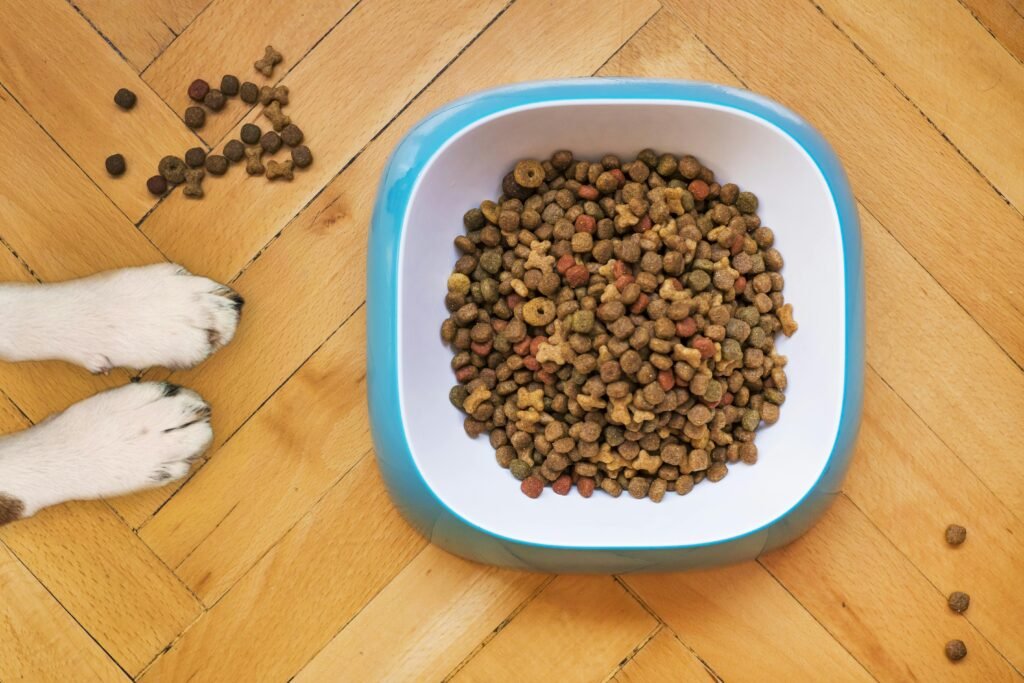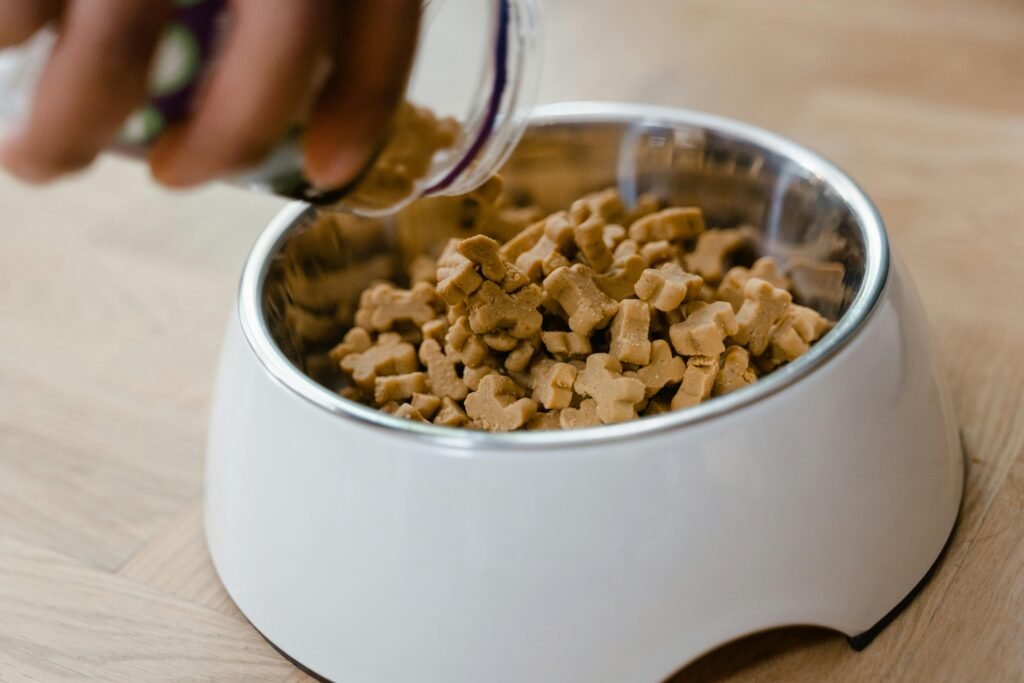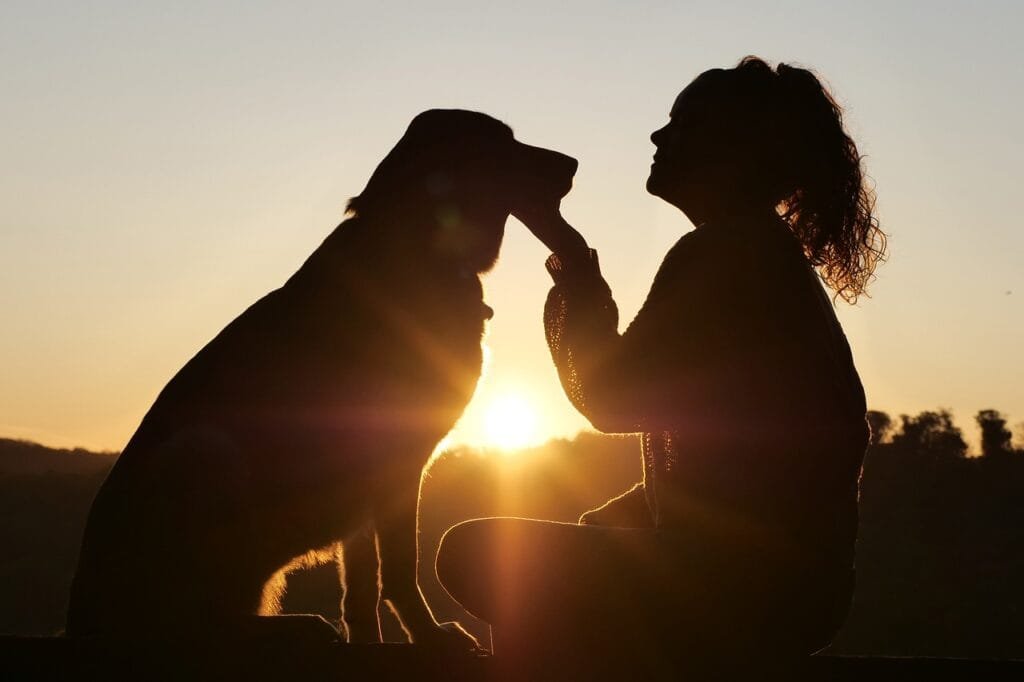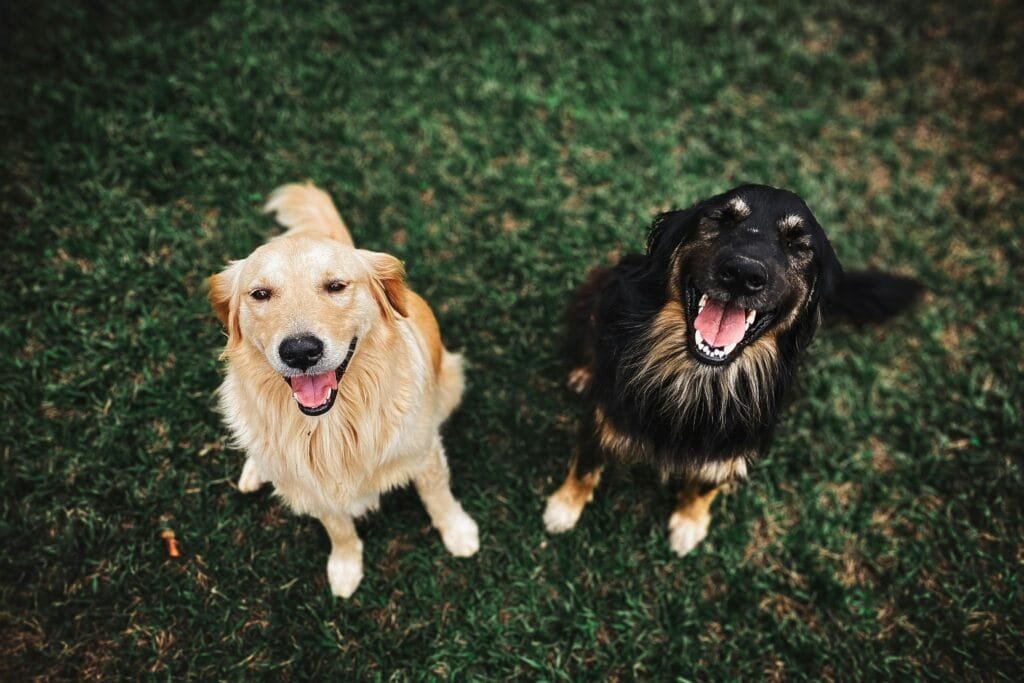How to switch dog food without upsetting your dog’s stomach
You decide your dog deserves a better dinner. You lug home a bag of fancy kibble, measure it into the bowl, and watch your pup inhale every crunchy bite. Hours later, a wet churn echoes through the hallway, and you are mopping the floor in your pyjamas. Learning how to switch dog food the smart way saves sleep, sanity, and a lot of paper towels.
Switching diets is part of modern dog life. Ingredient lists change, brands disappear, budgets rise and fall, and veterinarians sometimes say, “Let’s try a new formula.” The trick is giving your dog’s digestive system time to adjust. Done well, the swap can mean shinier coats, steadier stools, and a happier household. (For more help with big transitions, see The first 48 hours: helping your dog settle in.)
Quick takeaways
- Gradually replace the old food with the new over four days to spare the stomach.
- Use a kitchen scale or true measuring cup so calories stay consistent.
- Watch stool, appetite, and energy; slow the process if loose stools or vomiting appear.
Why change food in the first place?
Some families switch because a newly adopted rescue came home with mystery rations and they want a fresh start. Others respond to a veterinarian’s advice about allergies or weight. Sometimes the favourite brand just vanishes from the local store. Whatever the trigger, the objective stays the same: move from Point A to Point B without intestinal fireworks.
Dogs are specialists in routine. Their gut microbes adapt to the exact mix of protein, fat, fibre, and fillers they eat each day. A sudden overhaul can leave those microbes scrambling, which shows up as gas, vomiting, or diarrhoea. A little planning keeps the transition smooth and lets healthy microbes catch up instead of staging a revolt.
Inside the speedy canine gut
Dogs are built for velocity on the grass and in the gut. A human meal can meander through almost seven metres of intestine in a full day. A dog’s food races along a much shorter track and often finishes the trip in under ten hours. Researchers clocked Beagles’ small-bowel transit at one to two hours, a sprint compared with people. Another physiology review notes that dogs run a higher, more variable intestinal pH and have a simpler, shorter colon, leaving microbes little time to ferment fibre or reclaim water.
That quick schedule suits a carnivore that once gulped big prey meals, but it shrinks the safety buffer when recipes change. A 2023 study in Frontiers in Nutrition showed puppies switched overnight lost helpful bacteria such as Faecalibacterium and produced watery stools, while puppies eased through a gradual mix kept their microbiome steady. Short tract, new recipe, minimal time for enzymes to adapt—undigested nutrients pull water into the bowel and diarrhoea follows.
In practice that means:
- Less fermentation time
Sudden fibre boosts can inflate bellies before microbes adjust. - Quicker water loss
Fast transit leaves little chance to re-absorb fluid, so stools soften. - Microbe wobble
Helpful bacteria dip when their favourite nutrients vanish overnight; opportunists bloom and irritate the gut.
Blend old and new for four days and those microbes remodel enzymes, rebalance pH, and keep stools tidy. That is why every plan for how to switch dog food starts with small steps, not grand gestures.

A four-day plan most dogs can handle
Healthy adult dogs often do well on a four-day mix. Puppies, seniors, or dogs with past tummy troubles might need more time, but four days is a fine starting point. If your dog leans sensitive, you can follow PetMD’s seven-day transition guide. Otherwise, try the timetable below.
The four-day plan below is the fastest proven roadmap for how to switch dog food while keeping stools firm:
| Day | Old food | New food |
| 1 | 75 percent | 25 percent |
| 2 | 50 percent | 50 percent |
| 3 | 25 percent | 75 percent |
| 4 | 0 percent | 100 percent |
Measure the two foods into a resealable container each morning, shake to blend, and scoop from that pre-mixed batch all day. Keeping ratios consistent meal after meal helps your dog’s gut microbes adapt without surprises. Stick to the planned mix, feed at regular times, and hold off on new treats until the switch is complete.
Portion accuracy beats guesswork
Every bag brags about complete nutrition, yet calories vary wildly. One cup of high-energy working-dog kibble can deliver a third more calories than a weight-management blend. Feed identical scoops and you get surprise weight gain or slow weight loss. Portion accuracy is the secret sauce in how to switch dog food successfully; eyeballing rarely ends well.
- Use a real measuring cup, not a coffee mug.
- Better yet, grab a digital kitchen scale. Set the bowl on the scale, press zero, and pour until the grams match the label.
- Compare kilocalories per cup on both bags before you scoop. If the new food is richer, scale portions down slightly; if it is leaner, offer a bit more.
Curious about exact numbers? The veterinary-designed Balance IT calorie calculator lets you search many commercial foods and view calories and macronutrients side by side.
Reading your dog’s digestive headlines
Your dog can’t text “Mom, my belly hurts,” so watch for these clues during a switch:
- Loose stool that looks like pudding
- One bout of vomiting, then another
- Gas loud enough that the dog looks offended at their own backside
- A skipped meal from a pup who usually hoovers dinner
- Sudden droopiness or a belly tucked tight
One soft stool on day two is not a crisis. Hold the mix steady, stay calm, and monitor the next potty break. If three signs pile up, slide back to yesterday’s ratio and offer a bland meal of boiled chicken and rice. Gentle resets give the gut a breather without abandoning the plan. Noticing these signs early is part of mastering how to switch dog food like a pro.
Also track the small wins. Many guardians notice firmer stools by day three. Visible coat changes take longer and depend on the new food’s fatty-acid balance, so watch for subtle improvements over several weeks rather than overnight sparkle.
Why free-feeding muddies the waters
Scheduled meals are another pillar of how to switch dog food because they show you exactly what gets eaten. A bowl that sits full all day hides appetite shifts. A PetMD nutrition column notes that free-feeding masks appetite changes that can signal early illness. The World Small Animal Veterinary Association warns that constant grazing often sneaks extra calories into the day.
Serve meals on a schedule, pick the bowl up after fifteen minutes, and you will know exactly how the new food lands. Plus, your dog learns that food shows up, tastes good, and disappears again, which builds polite anticipation instead of all-day snacking.
Simple mistakes and easy fixes
Missteps in the process can trip up anyone learning how to switch dog food, yet each one has an easy remedy.
- Mixing in three new treats at the same time
Stick to one variable. Finish the kibble switch first, then introduce the salmon jerky. - Guessing portions by mug size
Kitchen scales cost less than a dog-sitter. Measure once, relax daily. - Panicking at the first gassy blurp
The gut notices novelty. One odd burp is not a verdict. Keep notes and look for patterns. - Trying a new protein and brand on the same day
If your dog struggles with change, keep the protein identical at first. Swap proteins later. - Switching foods every other week
That yo-yo keeps gut bacteria spinning. Commit to a full run before re-evaluating.
Keep a simple food diary
Grab a small notebook or phone app and jot down each meal’s ratio, the exact portion, and what shows up in the yard afterward. Add quick notes on energy or appetite, like “breakfast half-eaten” or “post-walk zoomies normal.”
Ten seconds per meal gives you a mini data set that reveals patterns you might miss day to day. If your dog hits a bump, those entries help your vet or trainer pinpoint causes quickly, saving you guess-and-check frustration. Keep this diary for two weeks and you’ll have hard data on how to switch dog food if you ever need to tweak again.
Key takeaways
- A four-day switch works for most healthy dogs; sensitive bellies may prefer a slower plan.
- Mixing old and new food gradually supports beneficial gut bacteria and reduces diarrhoea risk.
- Measure food with a cup or scale to dodge weight surprises.
- Meal schedules reveal appetite changes, while free-feeding hides them.
- Back up a day or call your vet if vomiting or diarrhea sticks around.
Making mealtimes smooth
Food changes do not have to spell disaster. Blend with care, measure precisely, watch the output, and respond early to tiny red flags. Your dog will reward you with steady stools, shiny fur, and eager tail wags at dinner.
If guarding or chronic pickiness sneaks into the kitchen alongside new kibble, Belle & Bark can help. We build calm, confidence-boosting routines so dogs feel safe from bacon strip to bedtime. Reach out any time to chat about happier mealtimes.
FAQ about how to switch dog food
“How to switch dog food” is one of our most common client questions, so here are the answers we give in consults.
How long does it take to switch dog food?
Plenty of dogs succeed in four days. Seven to ten days helps sensitive bellies, and some dogs need two full weeks. When uncertain, choose patience and ask your vet.
Can I mix wet and dry food during the switch?
Yes. Keep the ratio of old to new steady and remember wet food often carries more fat. Use the Balance IT calculator to compare calories.
My dog skipped breakfast. Should I worry?
One skipped meal can happen during a change. If your dog skips two or looks uncomfortable, call the vet.
Is it safe to swap proteins at the same time?
Dogs without allergy history often handle it well. Dogs prone to sensitivities do better keeping the same protein until the transition is complete.
Which bland diet helps if diarrhea shows up?
Boiled chicken and plain rice, in equal parts, offers a gentle reset. Feed small portions for one day before returning to the mix that was working.







